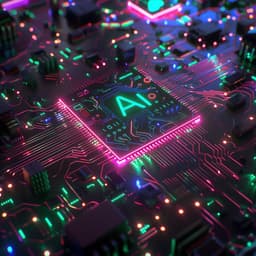
Geneva, Switzerland, February 20, 2025 – STMicroelectronics (NYSE: STM), a global semiconductor leader serving customers across the spectrum of electronics applications, is unveiling its next generation of proprietary technologies for higher-performing optical interconnect in datacenters and AI clusters. With the exponential growth of AI computing needs, challenges arise in performance and energy efficiency across computing, memory, power supply, and the interconnections linking them. ST is helping hyperscalers, and the leading optical module provider, overcome those challenges with new silicon photonics and next-gen BiCMOS technologies, scheduled to ramp up from the second half of 2025 for 800Gb/s and 1.6Tb/s optical modules.
At the heart of interconnections in a datacenter are thousands, or even hundreds of thousands, of optical transceivers. These devices convert optical into electrical signals and vice versa to allow data flow between graphics processing unit (GPU) computing resources, switches and storage. Inside these transceivers, ST’s new, proprietary silicon photonics (SiPho) technology will bring customers the ability to integrate multiple complex components into one single chip, while ST’s next-gen, proprietary BiCMOS technology brings ultra high-speed and low power optical connectivity, which are key to sustain the AI growth.
The rapid growth of cloud computing, artificial intelligence (AI), and data-intensive applications has placed unprecedented demands on data centers worldwide. As these sectors continue to evolve, so too must the infrastructure that supports them. Recognizing this need, STMicroelectronics, a global leader in semiconductor solutions, has unveiled an innovative solution designed to address the growing challenges faced by data centers and AI clusters: next-generation optical interconnect technology.
A New Era of Data Transmission
In the digital age, the transmission and processing of massive data streams are critical to the functioning of everything from cloud services to AI training and inference. However, as traditional copper-based interconnects struggle to keep pace with these demands, optical interconnects have emerged as the solution to achieving faster, more efficient data transfer. Optical communication offers a host of advantages over conventional electrical transmission, including higher bandwidth, lower latency, and reduced power consumption. This is particularly important as data centers are increasingly tasked with handling high-performance computing (HPC) workloads, AI workloads, and large-scale storage.
STMicroelectronics’ new optical interconnect solution promises to revolutionize data communication within data centers and AI clusters by providing a scalable, high-performance solution that meets the ever-growing needs of modern applications.

The Core Technology
At the heart of STMicroelectronics' new innovation is the development of cutting-edge photonic technologies, including advanced optical transceivers, modulators, and receivers. These components are crucial to enabling high-speed, long-distance data transmission with minimal energy consumption. The company’s new optical interconnect solution will deliver an unprecedented combination of speed and efficiency, making it ideal for cloud infrastructure, data centers, and AI clusters that demand ultra-low latency and high-throughput capabilities.
The key to STMicroelectronics’ approach is the integration of high-performance optical devices with the company’s existing semiconductor expertise. By leveraging its long-standing leadership in semiconductor technology, STMicroelectronics is able to provide a fully optimized solution that balances performance with energy efficiency—a critical factor in the design of modern data centers and AI clusters.
Applications in Data Centers
In data centers, the demand for faster and more efficient communication channels has never been greater. As companies move toward hybrid cloud models, store more data, and process more complex workloads, the need for robust interconnect solutions becomes paramount. Traditional copper interconnects are quickly becoming a bottleneck, as they struggle to provide the bandwidth and speed required by the latest generation of computing applications.
STMicroelectronics’ optical interconnect technology is poised to overcome these limitations. The solution will enable data centers to handle large volumes of data while reducing power consumption and physical space requirements. Optical fibers offer a higher data transmission rate over longer distances, which is essential for the interconnected racks and servers that form the backbone of modern data centers. Additionally, optical interconnects are less prone to electromagnetic interference, ensuring that data transmission remains stable and secure in environments with high electromagnetic activity.
As data center operators work to optimize their infrastructure, STMicroelectronics’ optical interconnects provide a future-proof solution that can scale alongside the growing demands of cloud computing, edge computing, and AI.
Advancements for AI Clusters
Artificial intelligence is one of the most data-intensive fields, requiring the processing of vast amounts of data in real time. Whether it’s training deep neural networks, running complex simulations, or processing huge datasets, AI workloads place enormous strain on the underlying infrastructure. As AI adoption continues to accelerate across industries—from healthcare and finance to automotive and robotics—AI clusters must be equipped with the necessary interconnect technology to handle the massive data flows required.
STMicroelectronics’ optical interconnects will provide the high-bandwidth, low-latency performance necessary to power AI clusters. These systems, which consist of thousands of interconnected processors, need ultra-fast communication channels to process data efficiently. By enabling optical interconnects between nodes in AI clusters, STMicroelectronics is unlocking new levels of performance for machine learning algorithms, AI-driven analytics, and more.
One of the key advantages of optical interconnects in AI clusters is their ability to minimize latency. In AI applications, where milliseconds can make a significant difference in performance, reducing latency is critical. Optical communication provides the low-latency solution needed for real-time processing and high-performance computing. Additionally, optical interconnects provide higher data rates, allowing AI clusters to manage more data simultaneously, accelerating processing times and improving overall system performance.
Energy Efficiency and Sustainability
As the global demand for data processing continues to surge, energy consumption in data centers and AI clusters is becoming a growing concern. Traditional copper interconnects consume a significant amount of power, especially when scaling to meet the increasing demands of modern computing workloads. With energy costs on the rise and growing environmental awareness, reducing power consumption has become a priority for data center operators.
STMicroelectronics’ optical interconnect solution addresses this challenge by significantly improving energy efficiency. Optical interconnects require far less power than their copper counterparts, particularly when transmitting data over long distances. As data centers look for ways to reduce their carbon footprint and meet sustainability goals, adopting optical interconnects will play a critical role in achieving energy efficiency.
By reducing the power required for data transmission, STMicroelectronics’ optical interconnects can help data centers and AI clusters lower operating costs while also contributing to global sustainability efforts.
The Road Ahead
STMicroelectronics’ new optical interconnect solution is a significant step forward in the evolution of data center and AI cluster infrastructure. As demand for high-performance computing, AI, and cloud services continues to grow, the need for innovative interconnect solutions will only increase. By offering a scalable, energy-efficient, and high-performance optical interconnect technology, STMicroelectronics is positioning itself at the forefront of this crucial industry transformation.
The company’s new optical interconnects are expected to play a pivotal role in accelerating the adoption of next-generation cloud and AI technologies, enabling businesses to stay competitive in an increasingly data-driven world. As data center operators, cloud service providers, and AI developers look to the future, STMicroelectronics’ optical interconnects will undoubtedly become a cornerstone of the next generation of infrastructure.
About STMicroelectronics
At ST, They are over 50,000 creators and makers of semiconductor technologies mastering the semiconductor supply chain with state-of-the-art manufacturing facilities. An integrated device manufacturer, they work with more than 200,000 customers and thousands of partners to design and build products, solutions, and ecosystems that address their challenges and opportunities, and the need to support a more sustainable world. Their technologies enable smarter mobility, more efficient power and energy management, and the wide-scale deployment of cloud-connected autonomous things. They are committed to achieving our goal to become carbon neutral on scope 1 and 2 and partially scope 3 by 2027. Further information can be found at www.st.com.










